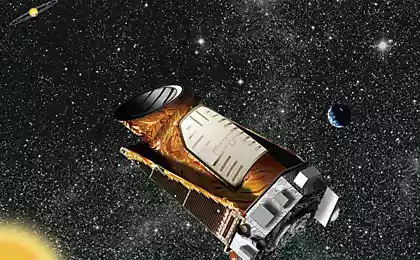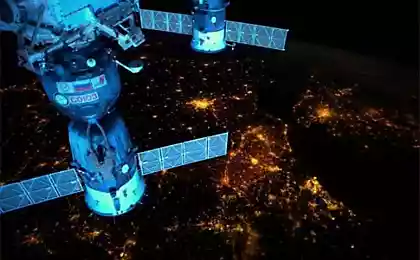561
Artificial intelligence can predict solar flares

A few months ago, the Sun appeared the largest sunspot that we have seen over the last 24 years. This is a terrible stain was noticeable to the naked eye (i.e. without the approximation, but with protective goggles) and spawned more than a hundred flares. The number of sunspots varies cyclically every 11 years, increasing and decreasing. Right now the sun is in the most active part of this cycle: we expect a lot of spots and a lot of outbreaks in the coming months.
People usually scares the destructive power of solar flares — there is a chance that one day a massive explosion on the Sun will throw in our direction a ton of energetic particles and fry our communication satellites. But nobody thinks about the fact that we can predict such outbreaks, like weather, and thus prevent any possible damage. But how to predict solar flare?
One of the ways is to use the programs of machine learning type of artificial intelligence that automatically extracts data from experience. These algorithms are constantly improving their mathematical models, when new data appear. But in order to learn algorithms require large amounts of data. Scientists do not have enough data about the Sun until 2010, until he was running the solar dynamics Observatory (Solar Dynamics Observatory, SDO), a sun-observing satellite, which sends every day about half a terabyte of data to earth — more than this satellite, the data not sent no device in the history of NASA.
Solar flares, as you know, is a complex active process. They occur in the solar atmosphere above sunspots located on the Sun's surface. Sunspots usually come in pairs, act like bar magnets — one spot as the North pole, the other as South. Given that the Sun is very a lot of spots, different layers of the Sun rotate at different speeds, the Sun itself has a North and South pole, the magnetic field is getting extremely saturated. As a result of the magnetic field, twisted like a rubber band that release a lot of energy in the course of its existence. So there is a solar flare. Sometimes twisted fields are not flash, sometimes flash appear from seemingly harmless spots, sometimes giant sunspots produce nothing.
We don't know what causes solar flares from the point of view of physics. We have — we know that flares have a magnetic nature, but we don't know how they release so much energy so fast. In the absence of a final physical theory, the best hope for forecasting solar flares lies in the handling of our massive amounts of data in search of clues.
There are two main ways of forecasting solar flares: numerical models and statistical models. In the first case we take as a basis the physics that we know make up the equations, run them in time and get the forecast. Second we use statistics. We answer the questions: what is the probability that in the active region with a giant sun spot will appear to flash? What is the probability that this will happen with a small stain? In the end, there huge datasets full of details: the size of sunspots, the magnetic field strength. Then scientists looking for connections between these parts and solar flares.
Machine learning algorithms can put an end to it. We use machine learning algorithms everywhere. Biometric watches use them to Wake us when our bodies need. They are better than the doctors predicted the rare genetic disease. They identify patterns, which inspired scientists throughout history. Scientists believe machine learning algorithms universal useful because they can understand non-linear data, and with the massive amount of people it is almost impossible to do. But a lot of the models are nonlinear, so such algorithms are increasingly used in all fields.
Scientists use machine learning algorithms to predict solar flares based on a huge dataset SDO. It had to build a database of all active regions, which was observed by SDO. Since this historical data, we know already flashed these active regions or not. The learning algorithm analyzes the details of the active regions, the sizes of sunspots, the strength of the associated magnetic fields, their twist — to reveal the General characteristic of the flare active region.
To do this, the algorithm begins with an assumption. For example, first, he suggests that a tiny sunspot with a weak magnetic field will generate a giant flash. Then checks the response. Oops, no. The algorithm then rebuilds its hypothesis. The next time he has another go. By trial and error, with hundreds of thousands of guesses and checks, the algorithm gradually improves the accuracy of their forecasts. It can be applied to data in real-time, and he continues to learn.
Further work in this direction will provide us a better understanding of the upcoming solar flares. While scientists have shown that machine learning algorithms are better or, at worst, the same as statistical or numerical methods. And that's cool, really. Such algorithms, which can work without the participation of the people, just browsing through huge amounts of data, will be infinitely useful — and more and more — in a variety of fields. It is curious that the same algorithms that make predictions of solar flares, can work with genetic diseases and their definition.
What if data will be more? Who knows. Although we have a lot of data on the Sun — SDO has been working for four and a half years, since it was not so many solar flares. Because we are in a very quiet solar cycle century. There is a reason to continue collecting data.
Source: hi-news.ru























